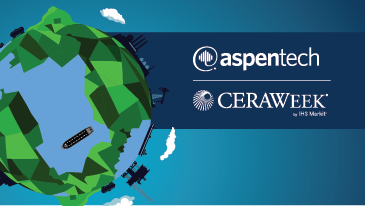Wednesday marked Day Three of CERAWeek 2018, on a startlingly blue-sky day in Houston. Daniel Yergin and his organization maintain CERAWeek at a frenetic pace, with so much important and fascinating material that it becomes literally impossible to take in everything that matters. So for those presenters with important insights, I’m sorry for missing some of you in this column!
For me, the highlight of the day was the brief, but important, presentation by Luca Bertelli, chief exploration officer of Eni, S.P.A. But I’ll come back to that after recapping the natural gas and LNG theme of the day.
Gas Day
Day Three is nicknamed “Gas Day” by those in the know. And there’s been a lot of meaningful dialogue on the topic of natural gas in general, and LNG in particular, today. The natural gas/LNG market is undergoing a transformation in front of us, and the interplay today was fascinating.
As the market transforms from a “long contract” to a “short contract” or commodity business, and as the dynamics are driven equally by strong gas supply in the U.S. and strong gas demand in Asia, the reactions of the various industry players paint several commercial visions. Different paths to competitive success have been posited at CERAWeek, which makes it all pretty interesting. And of course, the various positions of the different players are to some extent very predictable, based on the vested interests of the companies they lead or represent.
Big LNG Opportunities and Challenges
I’ll cover some of the finer points of that in a later blog, but a lot of the discussion, naturally, revolved around the burgeoning gas supply in the U.S., the growing export of LNG from the U.S., and where and whether demand is growing in emerging markets.
In short, the gas market has three fundamentals which are driving growth in worldwide demand for gas, as succinctly identified by Hendrik Gordenker, chairman of Japan’s JERA:
-
The growing interest in natural gas as a cleaner alternative to coal in power generation
-
The role of natural gas in reducing particulate emissions, a problem in many urban areas
-
The crucial role of natural gas in reducing greenhouse gas emissions (as a lower-carbon alternative to oil, diesel and coal)
Cheniere CEO Jack Fusco stated that at the present time, China’s drive to increase usage of natural gas (a policy decision, for reducing coal use in power production in favor of gas) has “consumed all of our LNG export capacity for the past year.” And he forecast, “We could double our production at Cheniere, and China would still take all of it.”
A few key points that I took away:
- The time delay in bringing LNG projects to fruition, both on the liquefaction and on the regasification side, needs to get shorter. Without providing details, Venture Global LNG’s Robert Pender talked about “new contracting models” and “de-risking project execution” as factors in their ability to drive down CAPEX costs on their most current project. MHI’s Hiroaki Osaki talked about process simplification, and International Gas Union’s David Caroll and JERA’s Gordenker talked about FSRUs (floating regasification plants). Attend our upcoming seminar on LNG in Houston on March 20 to hear about the fast-concept-select approach, which can cut up to a year out of projects.
- The concept of working further downstream, instead of simply supplying LNG, into the end market is an interesting integration idea. Petronas’ Datuk Anuar Taib talked about working closely with India and Indonesia on markets for their gas; PAO Novatek’s Mark Gyetvay talked about the financing elements of supplying into emerging “higher-risk” markets such as Africa and parts of Asia.
- Linking of LNG supply with natural gas fired electric power. Shell’s Andrew Brown talked about diversification into power production, not just natural gas but also solar and wind. As more energy use shifts from gasoline to electricity, electricity becomes part of Shell’s strategic energy picture, Brown explained.
- The growing challenges of financing the very high CAPEX required for LNG refrigeration plants. Gyetvay emphasized that he sees LNG moving more towards a commodity, with many implications. One of these, he said, is the increasing difficulty of securing the long-term financing for these huge projects, when they are no longer secured with long-term supply contracts.
All of this, of course, has important implications for the large natural gas surplus being created in the U.S., as loudly announced by U.S. Secretary of Energy (and former Texas Governor) Rick Perry in his early-morning address. The big question is, does that surplus have a way to be packaged up (into LNG) to get to market or are bottlenecks arising?
There are implications as well as for the potentially large gas demand, particularly in Asia. Rainer Seele, CEO of the Austrian energy giant OMV, quite directly pointed out to Jack Fusco of Cheniere that the upcoming expanded Russian pipeline capacity to Europe would be providing a handy alternative to U.S. LNG if Cheniere and others can’t assure supply “at the right price.”
I’m summarizing a whole day’s denouement of the key issues at stake in LNG, carefully scripted to develop over the day by CERAWeek. And the answers to the questions were left hanging in the air as the attendees adjourned to cocktails.
Eni: Exploration Discontinuity
But if the executives in attendance were looking for the real business discontinuities available to them, one of the places to look would have been the breakfast session on “super basins,” featuring the exploration heads of some leading upstream operators.
Unfortunately for those executives, few of them were in attendance at a fairly intimate session that was mostly populated with fellow exploration leaders interested in what their colleagues would have to say (along with some younger professionals). The notable exception was an impressive team from Pertamina, who were closely paying attention and definitely at the conference to learn and not to opine, as well as a few other like-minded companies.
The questions raised to the panelists were, what do you make of the new opportunities presented in particular by the Permian Basin “super basin” and the deep offshore Gulf Super Basin? What is next? And what are the strategies of the upstream operators to replace and grow their reserves?
This was a particularly good question, since the first day and a half talked about the importance of ongoing investment and replacement of assets for the stability of hydrocarbon markets (see my blog posts on Day One and Day Two).
The session started slowly, with Total USA’s Bruno Courme making some off-the-cuff remarks about what constitutes a “super basin” (producing for some time, very large identified reserves, existing infrastructure, no major social/political barriers) and Chevron’s Robert Ryan giving a clear and thoughtful primer on exploration and super basin history (focusing on explaining the Permian and Deep Offshore Gulf of Mexico).
Ryan concluded his remarks by saying they would keep doing what they are doing at Chevron in a disciplined way. Next up was BHP’s Niall McCormack, who did a great job of explaining BHPs strategy, and as the smallest of the four, it necessarily involves the discipline to stick to certain regions; but he also echoed Ryan’s concept of continuing the course, with focus.
This set the stage for Eni Chief Exploration Officer Luca Bertelli, presenting himself in a slightly unkempt and self-deprecating manner, but with a big message to deliver. Eni was the one of the four who clearly articulated a compelling strategy for the future. Bertelli started out by pointing out that back in 2005 and 2006, Eni’s exploration performance was terrible, forcing them to depend on acquisitions for new reserves. So they re-evaluated everything and came up with a completely new strategy.
Bertelli had two “big ideas” to talk about. He presented them succinctly, without detail but convincingly, and finished off by saying that now Eni was at the top of the class in terms of returns on exploration investment, instead of bottom of the barrel. He elegantly called their strategy “unconventional focus on conventional plays.” Pertamina’s upstream team was taking notes. Others should too.
The first idea is the “accelerated schedule,” the goal of which is early monetization of successful discoveries, bringing all aspects of an asset development into concurrency, from exploration to reservoir studies to engineering design to construction and operation. His point of evidence was a 28-month window from first discovery on their offshore Egypt gas play to first production.
The second idea, tied to the first, is very heavy use of digitalization, technology and big data. He talked about moving “from a sequential to a parallel approach of upstream processes.” I look forward to learning more about Eni’s approach and watching their success.
To learn more about AspenTech’s solution set for this area (used by Eni and many other upstream companies), read the recent AspenTech white paper on upstream digitalization.



Leave A Comment